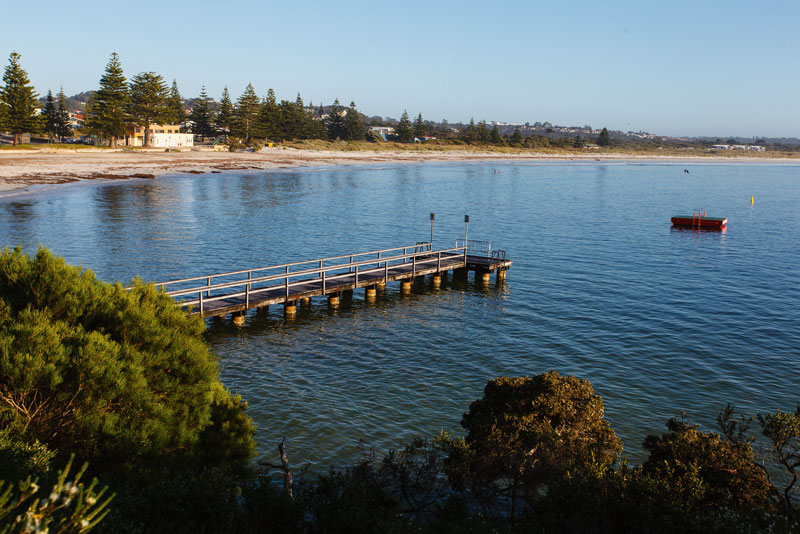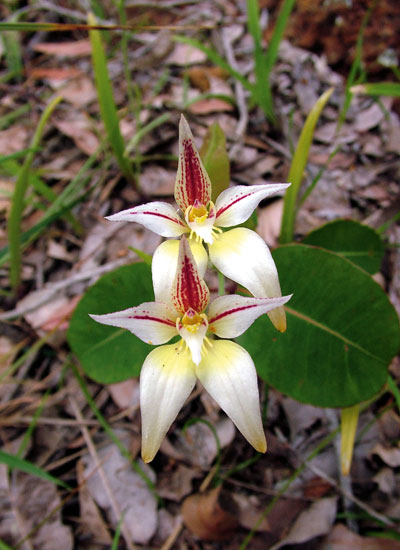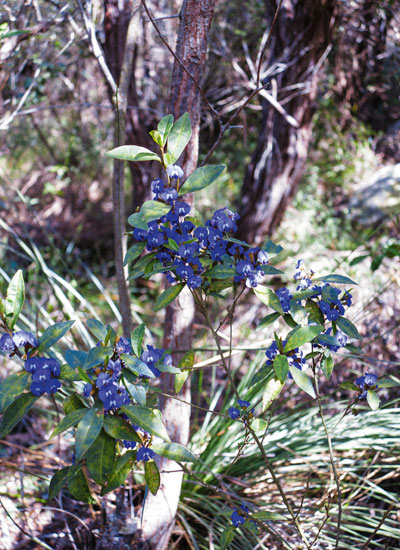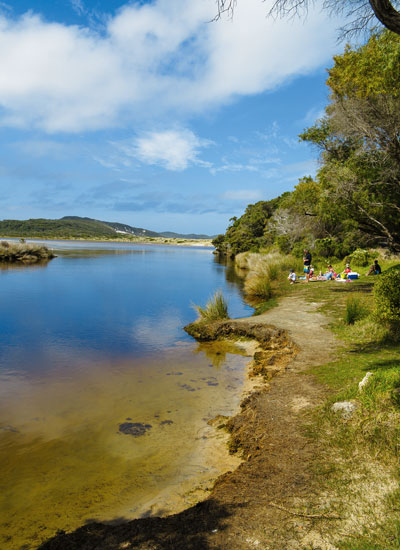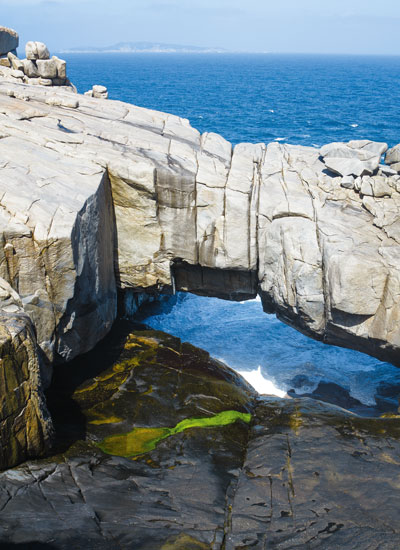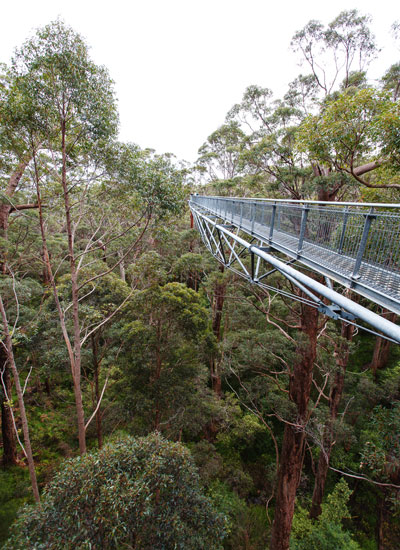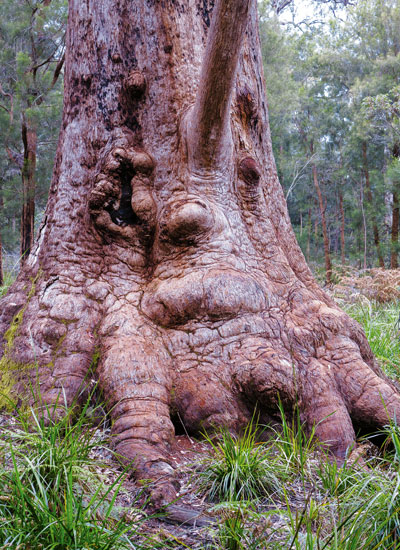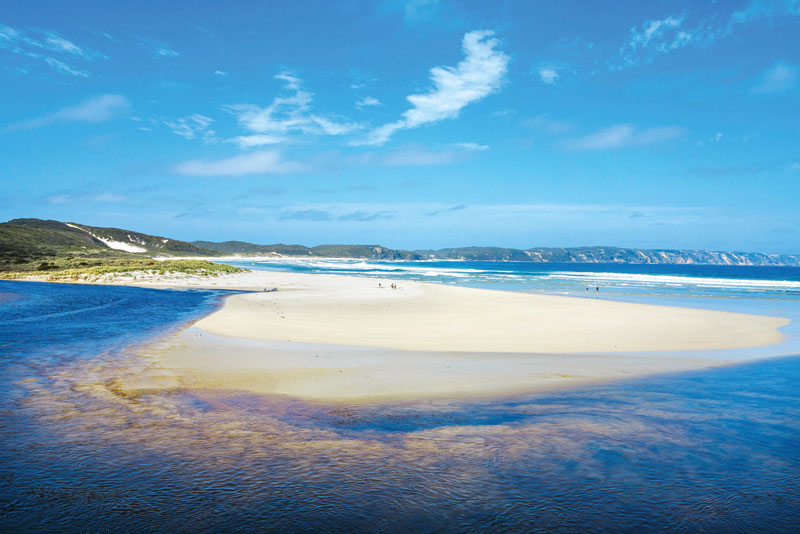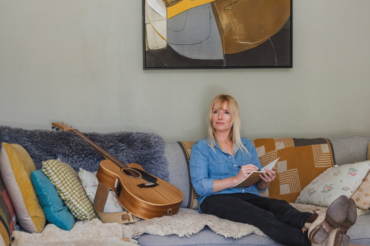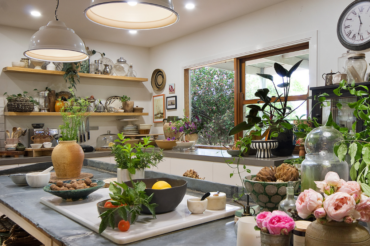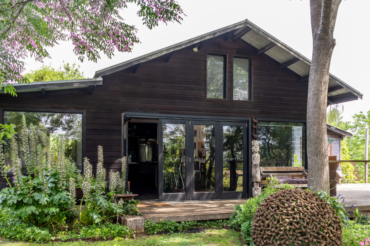For no other reason than because I can, I decide to photograph every wildflower I spot on the short walk from the car park down to Elephant Rocks. We’re not even in the Great Southern region’s recognised wildflower zones (the Porongurup Range, Stirling Ranges, Mt Lindesay and West Cape Howe National Parks, to name a few) but I quickly amass an album of more than 15 different flowers.
Welcome to Western Australia’s south-west, where everything is writ large. From breathtaking ocean scenery and pristine beaches to towering ancient forests and ragged mountain ranges, the Great Southern region is dressed to impress. Add in a vibrant wine and food scene, accommodation options from tent to top-notch, and an intriguing history both pre-and post-European settlement and you have a holiday destination that offers something for all comers. Albany, Western Australia’s first port and oldest European settlement, is the major town located about four and a half hours drive south of Perth. But there are also lots of quirky smaller towns including Denmark, Peaceful Bay, Kojonup, Katanning and Mount Barker to explore.
Great Southern is plonked in the middle of the Great South West Edge, Australia’s only, and one of 34 world-recognised, biodiversity hotspots. The region is in the top nine habitats for land biodiversity with a higher proportion of endemic species including birds and marsupials than any other equivalent region. Among the rare and endangered species it protects are numbats, quokkas on the offshore islands and the only remaining colony of Gilbert’s potoroos at Two People’s Bay near Albany. It’s also in the top six habitats for marine biodiversity with the world’s southern-most coral reefs and an ocean populated by dolphins, seals and Southern Right and Humpback whales. Great Southern is also home to extraordinarily diverse flora ranging from towering tingle, tuart, jarrah and karri forests to the more than 1000 wildflower species identified in the Stirling Range National Park. Eighty-two of them, including Darwinia mountain bells, are unique to the site and there are also 123 different orchid species.
Australian Country was lucky enough to visit in the middle of spring and as we soon discovered, the wildflowers spotted on that introductory walk were a mere appetiser for the bigger picture. More than half WA’s plant species grow in the south-western region and while some of the wildflowers have to be examined close up to be appreciated, together they build a sensational composite. During the peak season (from late August to December) local tour companies conduct guided trips, but rest assured at any time of year, there will be something in flower, not to mention scenery that will literally blow you away.
For more information on the Great Southern region visit westernaustralia.com.
This story was originally published in the April 2014 issue of Australian Country. Order the back issue here.
Click here for more escape stories.
Words Kirsty McKenzie
Photography Ken Brass

